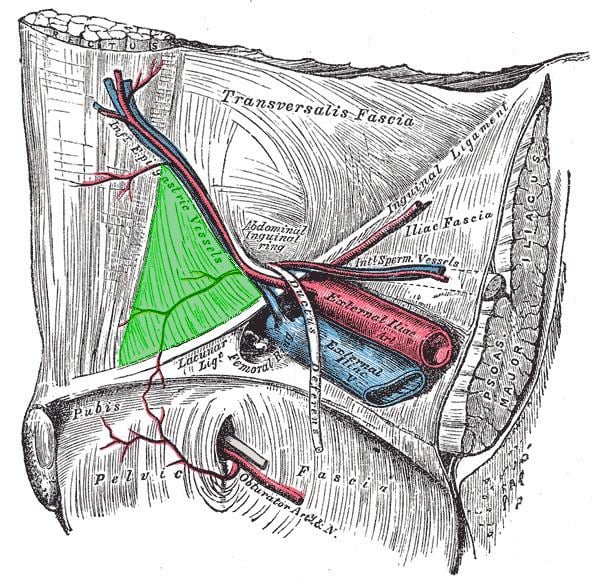Latin trigonum inguinale TA A10.1.02.433 | Dorlands/Elsevier t_19/12823490 FMA 256506 | |
 | ||
In human anatomy, the inguinal triangle is a region of the abdominal wall. It is also known by the eponym Hesselbach's triangle, after Franz Kaspar Hesselbach.
Contents
Boundaries
It is defined by the following structures:
This can be remembered by the mnemonic RIP (Rectus sheath (lateral border), Inferior epigastric artery, Poupart's ligament (inguinal ligament)).
Clinical significance
The inguinal triangle contains a depression referred to as the medial inguinal fossa, through which direct inguinal hernias protrude through the abdominal wall.
References
Inguinal triangle Wikipedia(Text) CC BY-SA
